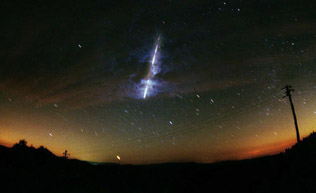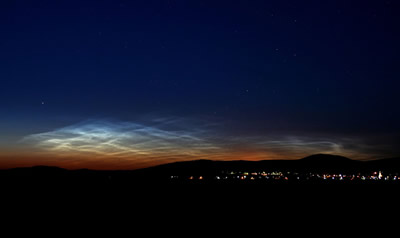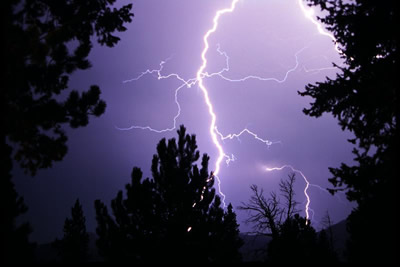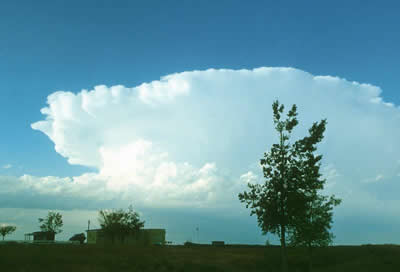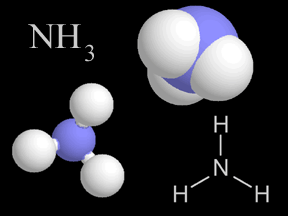Click on image for full size
Original artwork by Windows to the Universe staff (Randy Russell).
The Mesosphere
The mesosphere is a layer of Earth's atmosphere. The mesosphere is above the stratosphere layer. The layer above the mesosphere is called the thermosphere. The mesosphere starts at 50 km (31 miles) above Earth's surface and goes up to 85 km (53 miles) high.
As you get higher up in the mesosphere, the temperature gets colder. The top of the mesosphere is the coldest part of Earth's atmosphere. The temperature there is around -90° C (-130° F)!
The boundaries between layers in the atmosphere have special names. The mesopause is the boundary between the mesosphere and the thermosphere above it. The stratopause is the boundary between the mesosphere and the stratosphere below it.
Scientists know less about the mesosphere than about other layers of the atmosphere. The mesosphere is hard to study. Weather balloons and jet planes cannot fly high enough to reach the mesosphere. The orbits of satellites are above the mesosphere. We don't have many ways to get scientific instruments to the mesosphere to take measurements there. We do get some measurements using sounding rockets. Sounding rockets make short flights that don't go into orbit. Overall, there's a lot we don't know about the mesosphere because it is hard to measure and study.
What do we know about the mesosphere? Most meteors from space burn up in this layer. A special type of clouds, called "noctilucent clouds", sometimes forms in the mesosphere near the North and South Poles. These clouds are strange because they form much, much higher up than any other type of cloud. There are also odd types of lightning in the mesosphere. These types of lightning, called "sprites" and "ELVES", appear dozens of miles above thunderclouds in the troposphere below.
In the mesosphere and below, different kinds of gases are all mixed together in the air. Above the mesosphere, the air is so thin that atoms and molecules of gases hardly ever run into each other. The gases get separated some, depending on the kinds of elements (like nitrogen or oxygen) that are in them.
You know that waves can form in the ocean or other bodies of water. But did you know that there are waves of air in the atmosphere? Some of these waves start in the lower atmosphere, the troposphere and stratosphere, and move upward into the mesosphere. The waves carry energy to the mesosphere. Most of the movement of air in the mesosphere is caused by these waves.








